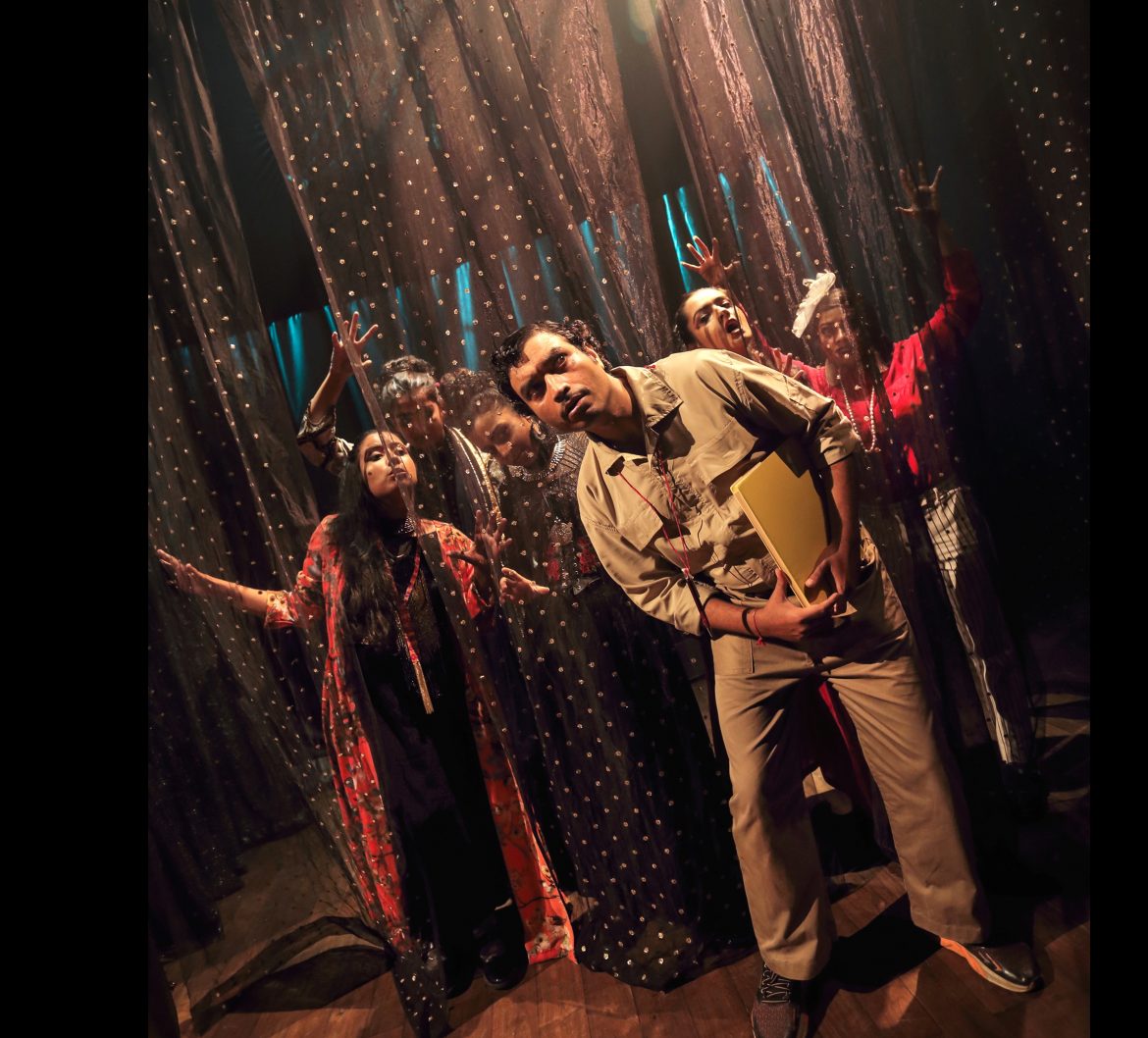Wicked Women:
In common usage, the word chudail describes an aggressive or quarrelsome woman—could be said to be the Indian equivalent of bitch. But the origins of the chudail (often translated as witch but succubus is more accurate) lie in folklore, and embellished by horror movies—the latest in Bollywood being Stree (2018).
The chudail is the spirit of a woman who died with unfulfilled desires and is supposed to be hideously ugly with her feet backwards, but she can transform herself into a beauty in order to seduce men; in this version, she dressed in a white sari, with long flowing hair. Once the man is enticed, she sucks his blood and leaves him shrivelled like an old man.
These myths are parodied and laughed at in Patchwork Ensemble’s new devised play, Shikaar (The Hunt). Devised productions can be slapdash or unfocussed, but with their very first production, Ila, Sheena Khalid and Puja Sarup got it right. Their plays pick contemporary subjects and give them an original twist, to create pieces that are fresh, thought-provoking and entertaining.
Shikaar, devised from Shubhangi Swarup’s concept and story, has been devised by her along with Sheena Khalid, Puja Sarup (co-directors) and actors, Shruti Vyas and Rachel D’souza.
The set (Tiya Tejpal) is all black, and before the play starts, strange sounds emanate from behind dark curtains. In the wilderness, a chatty cabbie (Dheer Hira), is driving a woman to a remote destination. Ordinarily, one would be afraid for the woman, but the situation is quickly reversed, when the man (who claims to be fearless) is taken into a mysterious house, where five chudails (Shruti Vyas, Neha SIngh, Chakori Dwivedi. Rachel Dsouza, Reshma Shetty) intend to feast on him. They are permitted to hunt for male prey once in a fortnight, so are rather looking forward to it, when there is a knock on the door.
The unexpected and unwanted visitor is JD Lal (Saurabh Nayyar), from the Samaj Raksha Evam Sudharan Sanstha. The oily-haired man, in high-waisted khaki pants, eyes shining with missionary zeal, has been assigned to go door to door and train people in how to spot and neutralize chudails. He carries a book titled Dekho Woh Aa Gayee, which makes him an expert on chudails, but he is unable to spot five right there in the room, because they do not match the white-sari-backward-feet appearance that his book describes. These women look normal (almost, the ghostly make-up would be overlooked by a man), though dressed in quirky outfits—one of them is a successful businesswoman in a suit (how often are women bosses called chudails by whiny male subordinates!)
Lal, obviously indoctrinated by a fanatical right-wing group, believes that chudails can be captured by sprinkling desh ki mitti on them, then taken to a camp and taught to become sanskaari.
While audiences are laughing at the absurdity of it all, the play slips in a satire about how patriarchy slots and punishes independent (financially, sexually) women. The chudail is perhaps the only female that men are taught to fear. So, while males roam around in dark or deserted places alone, without any reason to be afraid—women have to keep looking over their shoulder and brace themselves for an attack, for which they will be victim-shamed. What if the situation were to be reversed, and men made to realize what that feeling of constant dread is like. The shrieks of a man emanating from inside the gloomy house, could very well be the cries of a woman being assaulted.
The bitter message is, however, sugar-coated with humour, and it is a pleasure watching the women have fun (that cackle could be infectious!) at the expense of the two young men.
(Photo by Nazia Khan)

